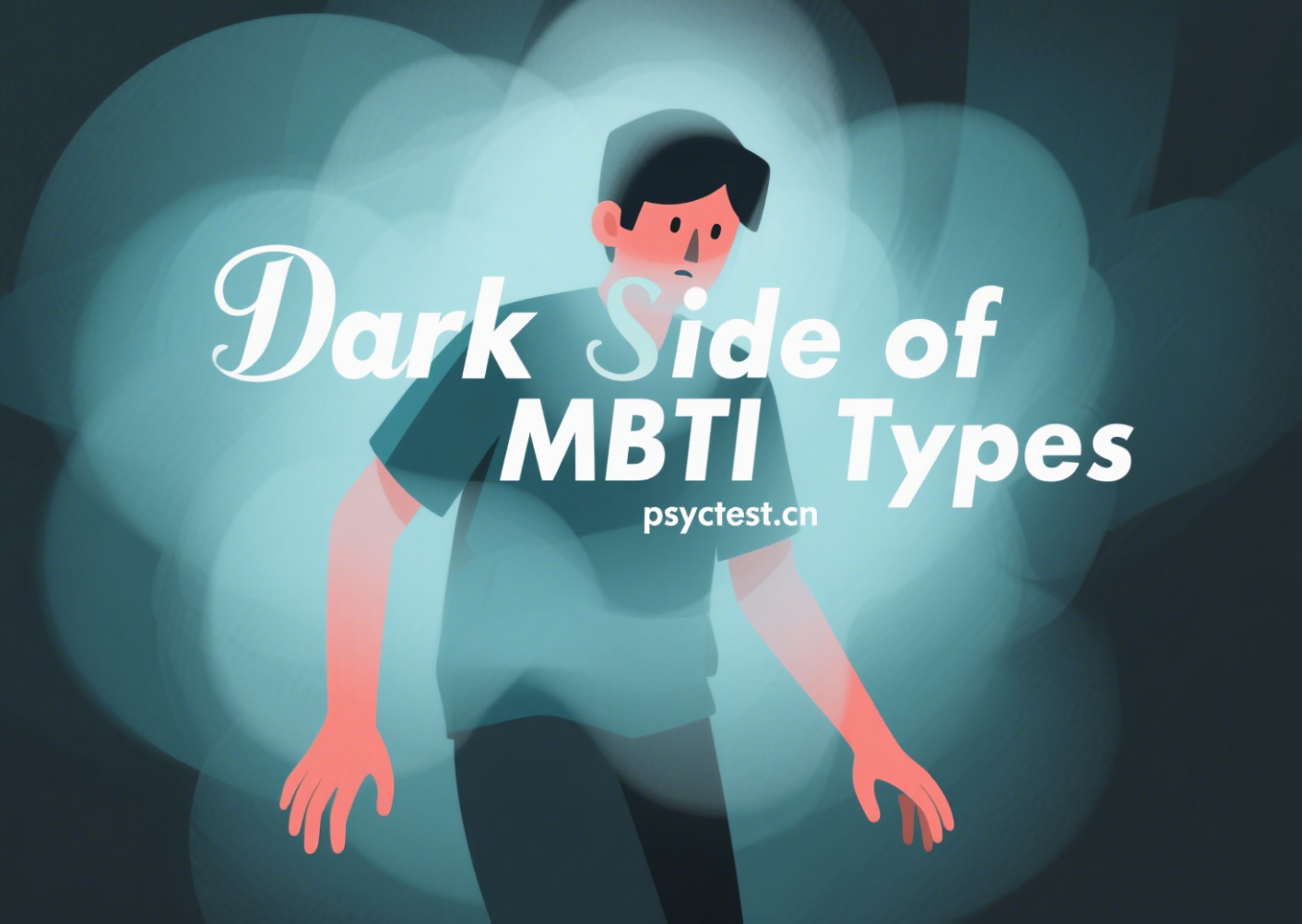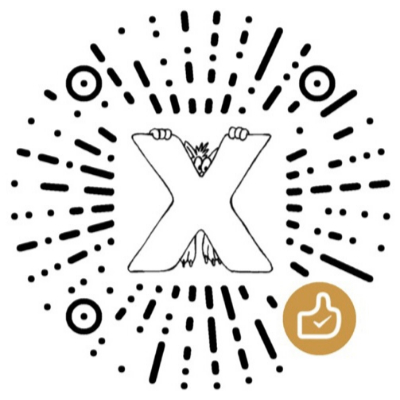人的性格并非非黑即白,正如光明处藏着阴影,每一种 MBTI 人格类型背后,也都潜藏着容易被忽视的负面倾向。本文将系统梳理 MBTI 十六型人格的“阴暗面”,帮助你从全新的角度认识自己与他人,避免性格盲区带来的困扰。
MBTI 十六型人格理论广泛应用于职业规划、人际沟通、情绪管理等领域,而在日常生活中,我们更容易看到某些人格的优势,却忽略了它们潜藏的问题。本篇内容将从真实体验与性格研究出发,对每种人格类型可能出现的极端或黑化倾向进行分析,并推荐相关深入文章,帮助你从更广维度理解 MBTI。
如果你尚未了解自己的 MBTI 类型,可以先通过 免费MBTI性格测试 来识别自己的类型,再返回本文对照查阅分析。
ISTJ:责任背后的固执执念
ISTJ人格以严谨、守规矩著称,但其最阴暗的一面,是“强迫式守旧”和“非理性顽固”。他们一旦认定某件事是“正确的”,便难以接受他人观点,甚至会用冷漠来拒绝合作。这种“非黑即白”的思维模式可能导致他们在复杂局势中缺乏弹性,错失机会。
处于阴暗面的ISTJ会极力控制外部环境,并强迫其遵循自己的规章制度或价值观,对他们视为威胁的人进行压制,即使这些人并无恶意。他们盲目接受从小灌输的不道德习俗和观念,并强制他人遵守,对除自己之外的任何人的感受或福祉漠不关心。未成熟的ISTJ不只遵守规则,更会严厉强制执行,对他人选择的评判性极强,认为自己的方式是唯一正确的,并难以理解情绪作为人类存在的一部分。他们痛恨不确定性,宁愿逃避模糊不清的情况,也不愿即兴发挥。
在极端压力下,ISTJ会变得过度关注无关紧要的细节,反复检查和修正,即使没有错误也担心。他们可能完全退缩,避免社交。若压力持续,他们会陷入“直觉外倾(Ne)功能失衡”状态,思维螺旋式地陷入最坏情景,如担心自己的错误导致一切崩溃,或系统完全失灵无法修复。
ISTJ需要学会在结构中融入灵活性。休息时间并非浪费,而是必需。与不同思维方式的人交流有助于拓宽视野。适度的新体验也有助于保持思维活跃。
👉 MBTI ISTJ人格详细分析
👉 更多ISTJ性格解读
ISFJ:关心过头,变成情感勒索
ISFJ对亲友关爱有加,却也容易因为“爱得太多”而变得控制欲强。他们经常以“我是为你好”的名义介入他人生活,甚至试图左右他人的人生选择。在他人看来,这种行为可能演变成不自觉的情感操控。
处于阴暗面下的具有破坏性的ISFJ认为所有人都必须立即遵循他们所采纳的习俗和价值观。他们表面友善,实则狡猾且被动攻击。若有人违背常规或打扰其既定习惯,他们会立即将其排除或暗中破坏。他们行善只为赞扬,若无赞扬则心生敌意,陷入自怜并制造罪恶感。未成熟的ISFJ会在“过分迎合的门垫”和“宇宙道德权威”之间摇摆,过度承担他人的情感负担而耗尽自己,或变得苛刻、自以为是,期望他人遵循自己的传统或道德观。
压力大的ISFJ会过度准备、担忧和劳累,反复回顾过去错误,预想灾难,并反复检查所有事。若压力持续,他们会进入“直觉外倾(Ne)功能失衡”状态,思维会陷入“末日螺旋”,怀疑一切努力的意义,或感觉社会即将崩溃。
ISFJ必须学会设定界限,懂得说“不”并非无礼,而是生存技能。独处时间是神圣的充电时刻。认识到并非所有问题都是自己的责任,并允许他人分担。尝试新事物(即使不适)有助于保持灵活性。
👉 MBTI ISFJ人格详细分析
👉 更多ISFJ性格解读
INFJ:拯救者心态的自我耗尽
INFJ 是典型的“深水静流”,外柔内刚。他们总试图读懂他人、疗愈世界,却往往压抑自己、孤立自处。阴暗时刻的 INFJ,可能深陷孤独与理想幻灭的泥沼。他们需要学会的是“照顾自己不是自私”。
阴暗面中的 INFJ 狡猾、善于操纵且自以为是。他们优先实现其未来愿景,为此不择手段,包括说谎、不正当交易和欺骗。他们常认为自己比他人更聪明、更有启发性,因此认为外部意见肤浅。他们停止珍视人际关系,转而生活在主观幻想世界中。未成熟的INFJ会困在自己的思想中,编织复杂的未来幻想,同时忽视当下。他们有一个关于事情“应该如何”的愿景,但难以接受事情“实际如何”。他们也可能变得评判性强,认为世界不理解他们,从而进一步退缩,认为有意义的连接是不可能的。
压力大的INFJ会首先退缩,试图通过直觉解决问题。若压力过大,他们会进入“外向实感(Se)功能失衡”状态,变得冲动、鲁莽,做出不合常理的行为,事后会感到极度羞愧,并因此进一步退缩。
INFJ需要走出思想宫殿,通过接触大自然、做志愿者或接触不同观点来保持接地气。独处时间至关重要,但并非完全隔离。信任自己的直觉,并通过冥想、日记或创意表达与内在声音连接。处理好世俗的责任,因为结构和日常有助于他们避免漂浮。
👉 MBTI INFJ人格详细分析
👉 更多INFJ性格解读
INTJ:冷酷自大,唯我独尊
INTJ的逻辑与战略思维令人佩服,但他们也极易陷入“智商优越”的陷阱,表现为轻视他人、不接受反对意见。他们常以“理性”为借口,否定他人情感需求。长此以往,他们可能成为孤军奋战的“孤岛将军”。
INTJ的阴暗面表现为冷漠、傲慢且控制欲强。他们对不认同自己观点或逻辑的人表现出蔑视和傲慢,甚至可能通过嘲讽或贬低他人来取乐。他们认为自己比他人优越,比其他人更聪明或更有启发性。他们固执地坚守自己的看法,不考虑其他观点。如果他们有腐败的愿景,可能会快速而可怕地制定出对人类福祉有害的策略。不健康的INTJ会变得冷酷、不屑和僵化,沉溺于自己的愿景,而忽视任何与之矛盾的事实或感受。他们失去耐心,对社交闲聊、情感问题或任何没有明确目的的事物不屑一顾。
压力大的INTJ会首先分析问题,退缩到自己的世界,梳理模式和视角。若压力持续,他们会进入“外向实感(Se)功能失衡”状态,变得冲动、鲁莽,做出不符合长期愿景的决定。他们可能会挥霍金钱,投入极端的体育活动。事后会感到强烈后悔,并因此进一步退缩,分析每一个错误,确保不再发生。
INTJ需要不可或缺的独处时间来思考、处理和策略。学会付诸行动,而不仅仅是计划,设定具体可衡量的目标。建立和维护关系,因为强大的关系能提供宝贵的视角并让他们保持接地气。练习灵活性,保持对新信息和不同观点的开放态度。
👉 MBTI INTJ人格详细分析
👉 更多INTJ性格解读
ISTP:冷漠断联,只图刺激
ISTP 以灵活务实著称,但他们也可能表现出对情感的极度疏离。他们更倾向独来独往,追求刺激冒险,对于关系中的共情与责任感,常常显得“心不在焉”。他们的暗面,就是“随时可以走人”的冷酷。
阴暗面中的ISTP 冷漠、破坏性强且放纵。他们能够做到无情地逻辑,但只在符合自己利益的情况下,对挡路的人不顾一切。他们无视自己的道德,不关心他人的福祉或感受。他们避免与人互动,厌恶人际关系。未成熟的 ISTP 将逻辑置于一切之上,以至于忘记人有情感。他们认为直言不讳就是“诚实”,但对他人来说是“残酷”。他们蔑视感情、责任和任何看似约束的事物。他们也会忽视长期后果,将账单、截止日期和承诺推迟。
在压力下,ISTP会首先退缩,需要空间思考和处理。若压力持续,他们会进入“外向感受(Fe)功能失衡”状态,变得比平时更情绪化。他们可能开始担心平时不关心的事情,对被拒绝感到偏执,甚至爆发情绪,事后会感到非常尴尬。
ISTP需要神圣的独处时间来充电。但人际连接仍然重要,即使是最自给自足的ISTP也受益于一些稳固的关系。设定小目标有助于管理责任。学会用逻辑和策略处理冲突,直接但不残酷地表达想法。
👉 MBTI ISTP人格详细分析
👉 更多ISTP性格解读
ISFP:逃避现实,沉迷幻想
ISFP 崇尚自由和艺术感,却常因情绪化和逃避现实而错失机会。他们容易沉溺在自我感受中,回避冲突,拖延决策。面对现实问题时,常以“我再想想”作掩饰,实则深陷内耗。
ISFP的核心阴暗面是自私、评判且放纵。他们容易因想象或误解的轻视而陷入痛苦和怨恨。被动攻击式的冷淡阶段会转变为自以为是的愤怒阶段。他们无视自己行为的影响,只考虑当下,有时非常鲁莽。他们倾向于过度放纵、过度消费、过度饮酒或追求享乐,而不考虑对自己或他人的影响。未成熟的ISFP会将感受误认为事实。他们过度逃避冲突,将不满情绪压抑起来,最终爆发时会让人感到意外。他们也可能难以自律,优先考虑当下感觉良好的事物,而非长期稳定。
压力大的ISFP会首先退缩,需要空间整理情绪。若压力持续,他们会进入“外向思考(Te)功能失衡”状态,变得过度控制。平时随和的ISFP会痴迷于整理生活,变得异常直接,专注于生产力,可能因达不到标准而对他人发脾气。
ISFP必须在内在反思和外部参与之间取得平衡。创意出口是不可或缺的。正面处理冲突,学会清晰地表达需求和界限。适度的结构有助于防止责任堆积。与信任的朋友或导师交谈有助于他们跳出自己的思维定势。
👉 MBTI ISFP人格详细分析
👉 更多ISFP性格解读
INFP:理想主义崩塌后的自我惩罚
INFP 富有同理心,却也容易陷入理想主义与现实脱节的痛苦。他们不愿妥协,却又缺乏行动力,最终选择“自我压抑”来逃避焦虑。一旦情绪积压爆发,往往以“情绪崩塌”告终。
INFP的核心阴暗面是 自以为是、自私自利,并在被动和极度评判之间摇摆。他们沉溺于梦想,却不考虑日常现实,可能忽视朋友和家人,活在幻想世界中。他们对自己的理想过于执着,以至于现实世界中的每个人都显得有缺陷和令人失望。他们可能认为自己在道德上优于他人,从而退缩并默默评判遇到的所有人。未成熟的INFP会将感受误认为事实。他们过度逃避冲突,将不满情绪压抑起来,最终爆发时会让人感到意外。他们也可能难以自律,优先考虑当下感觉良好的事物,而非长期稳定。
压力大的INFP会首先退缩,过度分析决定,难以找到前进方向。若压力持续,他们会进入“外向思考(Te)功能失衡”状态,变得苛刻、批判,且异常地专横。他们会开始列清单,执着于效率,觉得世界重担压在自己身上,所有事物都必须立即修复且没有足够好。
INFP需要独处时间来充电。同时,他们需要走出孤立,与信任的朋友交流,参与创意项目,并接纳挑战自己观点的视角。最重要的是,他们需要允许自己不必立即拥有所有答案。
👉 MBTI INFP人格详细分析
👉 更多INFP性格解读
INTP:高智商社恐的陷阱
INTP崇尚理性和探索,但他们常因社交障碍与情绪迟钝而被误解。过度理智、过度分析,导致他们在人际关系中常常“不合时宜”,甚至被视为“冷血”。他们需要的不是更聪明,而是更有温度。
阴暗面下的 INTP 傲慢、疏忽大意,沉溺于自己的思想和理想,从而忽视和漠视依赖他们的人。他们蔑视大众,认为自己比他人智力低下或不够聪明。他们游荡在自己的孤独世界中,逃避责任和亲人。他们会把人当作实验工具,玩弄人来观察会发生什么,然后随意丢弃。他们经常使用严厉的语言,却不考虑自己的言论对他人情感的影响。未成熟的INTP是“分析瘫痪的大师”,拥有绝妙的想法却从不付诸实践。他们过度分析,导致行动受阻。他们会忽略实际生活,例如账单、约会、甚至身体需求。他们也难以清晰地表达自己的想法,认为世界过于“愚蠢”无法理解他们。
压力大的INTP会首先退缩,过度分析,并花费太多时间在晦涩的主题上。若压力持续,他们会进入“外向感受(Fe)功能失衡”状态,突然变得情绪化、高度敏感,并饱受自我怀疑的困扰。他们可能无故发脾气,变得异常戏剧化,或因小事而崩溃,事后感到极度尴尬,并因此进一步退缩。
INTP在深思熟虑和现实参与之间建立平衡时最健康。他们需要独处时间来思考和探索。与聪明人辩论有助于磨砺想法并保持接地气。进行低强度的接地气活动,如大自然散步或动手爱好。将项目分解成小块,避免陷入分析瘫痪。
👉 MBTI INTP人格详细分析
👉 更多INTP性格解读
ESTP:行动派的利己本能
ESTP是天生的冒险者,敢于突破常规。但其阴暗面是“只为当下活”的冲动人格。他们容易不顾后果地做决定,甚至伤害他人而不自知。他们的口头禅是:“这有什么关系?”
ESTP核心阴暗面是利用所有阻碍他们的人来体验刺激、机会和乐趣。他们是熟练的操纵者,毫不犹豫地撒谎、欺骗或诈骗以达到目的。他们压制任何道德考量,对他人情感和理想漠不关心。不健康的ESTP会追求刺激而牺牲责任,做出只为寻求快感而不考虑长期后果的选择。他们会忽略截止日期、忘记承诺,并找各种借口。当他们的魅力无法得逞时,会变得苛刻,无视他人需求以保持兴奋。未成熟的ESTP是“人类形态的享乐主义者”,所有决定都围绕着“当下感觉良好”,完全不顾对未来的影响。
压力大的ESTP会首先采取行动,分散注意力,直接解决问题。若压力变成慢性,他们会陷入全面偏执,到处看到威胁和背叛。他们通常敏锐的直觉会扭曲,变得过度多疑,并可能因冲动而做出只会加剧局势的决定。
ESTP需要自由与纪律的结合。非结构化时间(冒险和自发性)至关重要。但结构也是必要的,设定小的、灵活的目标能使责任更容易管理。放慢速度是一种超能力,在做重大决定前暂停能避免不必要的灾难。深入的对话很重要,倾听而非仅仅反应能帮助他们成长和保持清醒。
👉 MBTI ESTP人格详细分析
👉 更多ESTP性格解读
ESFP:表面风光,内心焦虑
ESFP外向开朗、热情好动,但也极易被“表现欲”和“虚荣心”绑架。他们追求外在的赞美,却常在夜深人静时陷入空虚。他们的阴暗面,是对“被忽视”的极度恐惧。
阴暗面下的ESFP会不择手段地吸引注意力并感觉良好。他们冲动行事,傲慢自大。他们厌恶任何可能掩盖自己光芒的人或事,并会对其进行被动攻击。他们的生活被主观情感所支配,积极避免理性推理和批判性批评。不健康的ESFP会为了寻求即时满足而做出冲动选择,不考虑长期后果。他们可能会不必要地冒险,忽视责任,或以更具操纵性的方式使用魅力来达到目的。他们的同理心会退居次席,变得自私自利的寻求刺激者。
压力大的ESFP会首先分散注意力,投入活动,看剧或健身以摆脱消极情绪。若压力持续,他们会进入“阴影自我”状态,变得悲观、退缩,并过度关注未来。他们会痴迷于最坏情景,确信一切都注定失败。他们可能会孤立自己,过度思考每个决定,感到彻底被困住。
ESFP必须在自发性与稳定性之间取得平衡。玩乐与结构并非敌人。独处时间是重置按钮,帮助他们充电并处理经历。学会忍受不适,而不是立即分散注意力。将大目标分解成小步骤,使其更容易坚持。
👉 MBTI ESFP人格详细分析
👉 更多ESFP性格解读
ENFP:多变不定,情绪化驱动
ENFP拥有强烈好奇心和丰富情感,但缺乏恒心与规划。他们容易因情绪波动剧烈而频繁更换方向,难以稳定地执行长期目标。他们的暗面是“永远在开始,永远不结束”。
处于阴暗面中的 ENFP 欺骗、自大和不忠。他们认为自己的兴趣和信念是宇宙的中心,只从能从他人那里得到什么来考虑他人。他们粗心大意地放弃计划,忽视职责,从一个概念或关系跳到下一个。对于不健康的ENFP来说,灵感和兴奋是全部,他们会不择手段地获取,即使涉及撒谎或不道德行为。未成熟的ENFP是空有大梦想却过敏于执行的矛盾体。他们沉迷于新可能性,但难以完成已开始的事。他们对不认同自己世界观的人变得评判性强。他们讨厌批评,会选择舒适而非成长。
在极端压力下,ENFP通常关心想法和可能性,但突然会执着于无意义的细节。他们变得僵硬、挑剔和过度批判,表现得像一个不健康的ISTJ。他们会失去大局观,专注于琐碎的任务,试图在混乱的思维中建立秩序。
ENFP在建立既允许探索又具有一致性的日常习惯时最快乐。他们需要时间充电。更重要的是,他们需要多样化的个性在身边,这些人能挑战他们的思维,在他们漂浮太远时给予接地气的提醒。
👉 MBTI ENFP人格详细分析
👉 更多ENFP性格解读
ENTP:语言武器的双刃剑
ENTP聪明、健谈、有主见,却容易玩世不恭、言语锋利。为了赢得辩论,他们不惜伤害他人情感,习惯把一切当作游戏。他们的黑暗面,就是“说话太快,心动太慢”。
阴暗面里的ENTP 自私、善于操纵和居高临下。他们总是被想法包围,为了实现下一个目标,他们会不择手段地追求这些想法,包括欺骗、玩弄或抢劫他人。他们喜欢恶搞他人,不关心对他人造成的情感伤害。他们不可靠,为了不断变化的奇想而抛弃亲人。未成熟的ENTP为了争论而争论,喜欢解构他人的想法以证明自己更聪明。他们对他人情感极度不敏感,但在争论的外表下,通常渴望得到认可和连接。他们难以完成已开始的任务,留下几十个半成品项目。
压力大的ENTP会变得更容易分心、不专注和精力充沛。若压力持续很长时间,他们会突然想要“翻转开关”,表现得像一个不健康的ISFJ。他们变得异常胆怯、优柔寡断和厌恶风险。他们也可能变得退缩、高度敏感和过度情绪化,感到莫名其妙的愤怒。
ENTP需要定期通过学习新事物、承担新项目或与启发性的人相处来挑战自己。学会放慢速度并专注于一件事。他们应该制定策略来完成重要的任务,例如设定每天完成两项任务或工作一小时后休息的目标。
👉 MBTI ENTP人格详细分析
👉 更多ENTP性格解读
ESTJ:控制欲爆棚的管理者
ESTJ善于组织管理,但在负面状态下也会变得极度霸道。他们习惯以“高效”为名命令他人,拒绝聆听不同意见。他们的阴暗面,是“你听我说的就对了”。
处于阴暗面下的ESTJ倾向于专断、好斗和跋扈。他们认为自己的方式是唯一正确,并自以为是地认为最了解所有人的最佳利益。为了维护自身观点,他们不尊重他人的情感和道德。他们横冲直撞,忽视道德后果以达成目标。未成熟的ESTJ像一个“不下班的老板”,沉迷于生产力,将每时每刻都视为任务。他们对行动缓慢的人极度不耐烦,并可能对达不到他们极高标准的人表现出毫不掩饰的失望。
在压力下,ESTJ会加倍努力工作,并期望他人也如此。若压力持续,他们会进入“内向感受(Fi)功能失衡”状态,陷入情感泥沼,感到孤立、被误解和情绪脆弱。他们可能会无故发脾气,并立即后悔。
ESTJ需要将休息时间像商务会议一样安排。学习在关系中倾听不同观点,而不是仅仅关注效率。
👉 MBTI ESTJ人格详细分析
👉 更多ESTJ性格解读
ESFJ:依赖他人肯定的隐形焦虑
ESFJ重视人际关系,热情周到,但他们也可能极度依赖他人认同。他们活在“别人的目光”中,为迎合外界而失去自我。他们的阴暗面是“越被喜欢,越焦虑”。
处于阴暗面里的ESFJ容易八卦、操纵和控制。他们吸收周围人的价值观,并欺压那些持有不同价值观的人。他们是“老师的宠儿”,总寻求赞扬,若无赞扬则自怜。他们可能不诚实、两面派和被动攻击,嘲笑或贬低不认同大众观点的人。未成熟的ESFJ会在“过分迎合的门垫”和“宇宙道德权威”之间来回切换,过度承担他人的情感负担而耗尽自己,或变得苛刻、自以为是。
压力大的ESFJ会寻求朋友安慰,在例行公事中寻找慰藉。若压力持续,他们会进入“内向思考(Ti)功能失衡”状态,变得过度分析和退缩。他们会反复回顾过去错误,分析自身逻辑,陷入“分析瘫痪”,最终感到悲观、自我批评和隐居。
ESFJ必须学会独处时间并非自私,他们需要这种时间来充电。认识到并非所有问题都是他们的责任,并学会后退。建立健康的界限,学会说“不”而不感到内疚。学会将逻辑和情感结合起来做决定。
👉 MBTI ESFJ人格详细分析
👉 更多ESFJ性格解读
ENFJ:披着共情外衣的控制
ENFJ充满魅力与关怀,却也可能因“救世主情结”而变得伪善和操控。他们往往以“我是为你好”为名,施加影响,掩盖控制欲。他们的阴暗面是“用爱让人窒息”。
ENFJ的核心阴暗面是戏剧化、专横且善于操纵。他们喜欢劝说和施压他人接受自己的信念和愿景。对于不听从他们“好心建议”的人,他们会施加被动攻击。他们蔑视那些他们认为智力低下的人,同时对权威人物表现出尊重。他们会随意泄露他人的秘密,并支持任何能帮助他们实现未来愿景的人。未成熟的ENFJ可能评判性极强,尤其是在他们认为有人不必要地搅局时。他们可能成为自封的“社会警察”,压制异议,并巧妙地操纵局面。他们对被喜欢的需求也可能使他们避免必要的冲突,压抑真实感受,最终怨恨悄悄积聚。
压力大的ENFJ会首先寻求情感支持。若问题涉及相互冲突的人际需求,他们会感到焦虑、情绪耗尽。若压力持续,他们会退缩,过度分析每一个错误,并开始质疑自己的判断,变得自我批评和不安全。若他们进入“内向思考(Ti)功能失衡”状态,会变得冷淡、挑剔,并痛苦地自我贬低。他们会反复回顾每一次失败,之后立即感到内疚。
ENFJ必须学会平衡对外关注与内在自我关怀。独处时间对他们来说是非谈判的,有助于反思和充电。界限是至关重要的,并非所有问题都是他们的责任。接触多样化的视角有助于保持开放和灵活。学习忍受不适,接受并非所有情况都有完美的和谐解决方案。
👉 MBTI ENFJ人格详细分析
👉 更多ENFJ性格解读
ENTJ:权力与掌控的极端表达
ENTJ是天生的领导者,但当目标感过于强烈时,他们会变得独断、冷漠。他们为达目的不择手段,忽视人情世故,压迫团队成员。他们的阴暗面,是“你跟不上我,我就换人”。
阴暗面下的ENTJ倾向于好斗、专横和脾气暴躁。他们对未来有清晰的愿景,并会强迫所有人接受,很少考虑他人的意见和观点。他们可能是可怕的恶霸,脾气暴躁,用敏锐的智慧和有理有据的论点来羞辱和恐吓敌人。他们认为自己超脱于情感和主观感受,将他人的情感和道德视为不重要或愚蠢。未成熟的ENTJ是**“穿西装的推土机”,僵化、教条,痴迷于“正确”。他们会蔑视那些“跟不上”的人,以自鸣得意的方式推翻异议。他们难以承认错误**,认为如果计划不成功,很可能是别人的错。
压力大的ENTJ会加倍努力工作,执着于解决问题,并强行克服疲惫。若压力过大,他们会进入“内向感受(Fi)功能失衡”状态,突然感到完全失控,被“情感”所淹没。他们可能会意外发脾气,异常地情绪崩溃,或退缩到孤立中,事后感到尴尬和自我谴责。
ENTJ必须学会平衡抱负与反思。将休息时间像商务会议一样安排。学会寻求帮助和授权。练习耐心,放慢速度并考虑不同观点。适应情感,无论是自己的还是他人的,而不是将其视为“不合逻辑”而驳回。
👉 MBTI ENTJ人格详细分析
👉 更多ENTJ性格解读
总结:面对阴影,才能更完整地成为自己
MBTI 性格模型让我们更容易看清自己,也更容易误判自己。正视性格中的“阴暗面”,并不意味着否定,而是一种深度接纳的开始。了解自己的黑暗面,才能避免它主导我们的人生。
如果你希望更全面、深度地认识自己的人格特点,不妨体验赛可心理测试官方版免费MBTI性格测试,获取属于你的人格档案。
同时,如果你渴望对人格模型进行更系统、更专业的探索,也可查阅 MBTI高级人格档案。这一系列资料由赛可心理测试团队基于心理学模型与大数据分析共同打造,内容详实,直指内心,为你的成长与关系提供深层支持。
更多人格类型文章与心理学知识,欢迎访问赛可心理测试官网(psyctest.cn),我们致力于用更具洞察力的心理内容,助你了解真实的自己与他人。
如你希望进一步了解每种人格在爱情、职场、人际中的表现,可在下方评论你想探索的主题,我们会持续更新内容与你互动。
本文链接: https://psyctest.cn/article/vWx1VAdX/
原创文章如有转载时请以本链接形式注明作者和保留出处。


